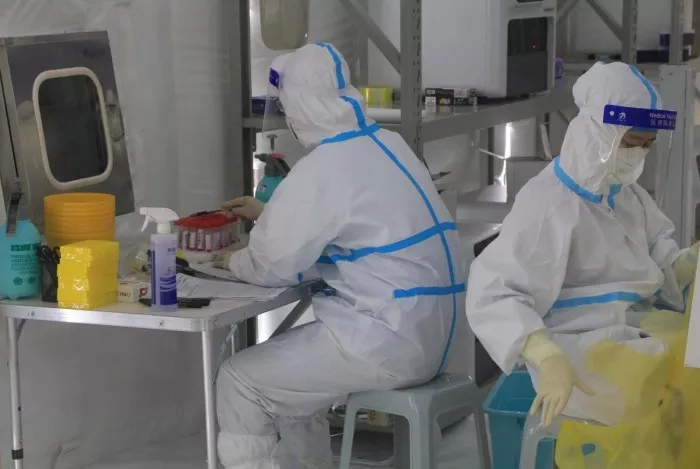In order to strengthen the defense line of the COVID-19 and prevent the possible rebound of the epidemic, routine nucleic acid screening is still in progress. However, in many places, once local transmission occurs, some streets, towns, districts and counties are doing full nucleic acid every day for a week or even more. Is this extremely high frequency nucleic acid detection necessary? How many days is nucleic acid scientific?

In this regard, the first financial reporter interviewed a number of infectious diseases and public health experts. Experts suggest that even for high-frequency screening, there is a theoretical basis for doing nucleic acid every other day, but it is not recommended to do it every day.
Professor Lu Hongzhou, President of Shenzhen Third People's Hospital, told the first financial reporter: "even under the most stringent epidemic prevention measures, it is enough to maintain a two-day nucleic acid test. The theoretical basis of the next day test is that the virus has a three-day incubation period. In the middle of the incubation period (about 1.5 days), the virus begins to replicate and is infectious. At this time, the nucleic acid test can detect positive."
In other words, after exposure to the virus and new infection, the nucleic acid test may not be positive until at least 1.5 days later. For example, if a negative person has nucleic acid in the morning and is infected in the afternoon, the nucleic acid result of that night must be negative; The second nucleic acid test will be conducted in the morning of the next day. At this time, it is less than 1 day away from the virus exposure, so the nucleic acid test result is still negative the next night; When the nucleic acid exposure is more than 1.5 days, the virus can be detected again.
"Such a theory has guiding significance for the frequency of nucleic acid detection, because most people will follow such a law. Although the detoxification of each individual will always be different, the probability of accidents is very low. Generally speaking, the next day detection method is scientific." An infectious disease expert told the first financial reporter.
The above experts also said that if the next day screening can not be done, then three-day screening is also feasible. "The advantage of three-day screening is that some cases with longer virus incubation period can also be screened out." He told the first financial reporter, "if you screen the next day, you can do antigen again on the third day to improve the positive detection rate, because when the virus starts to replicate, that is, it is infectious, the antigen will also show positive in most cases."
In the eighth edition of the prevention and control plan for COVID-19 issued by the state, it is proposed to carry out nucleic acid detection for key populations. According to the epidemic situation and epidemiological investigation results, carry out risk assessment, determine the scope and order of nucleic acid testing population, formulate operable testing scheme, quickly organize and dispatch nucleic acid testing forces (including third-party testing institutions), and do a good job in sampling testing and quality control. The testing institutions shall feed back the testing results to the sample sending unit within 12 hours.
"Although in theory, the higher the frequency of nucleic acid detection, the more likely it is to reduce the probability of errors, it is meaningless to interval only 24 hours. The premise of all this is based on the strict control of the quality of nucleic acid detection. Otherwise, the more we do, the greater the probability of errors." A public health expert told the first financial reporter.
The above experts said that the relevant departments should have a rough statistics on the limit of a city's nucleic acid detection capacity and how many people can be deployed for nucleic acid detection. "Then the amount of nucleic acid you detect every day should not exceed this capacity range, otherwise the quality may be out of control. The more you do, not only the probability of error will increase, but also the more financial and human resources will be wasted." He told the first financial reporter.
"In addition, when the epidemic breaks out, although some processes can be optimized according to the actual situation, some basic bottom lines and principles should be maintained." He also stressed that, "For example, community nucleic acid screening must be carried out in an organized environment. Many cases have proved that there are crowding in some places, which may increase the risk of super transmission. Even if all parties have learned a lesson and basically achieved orderly organization, it is still a gathering of people after all. Therefore, the methods and methods of nucleic acid testing still need to follow the scientific basis, and the less unnecessary testing, the better."